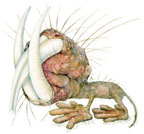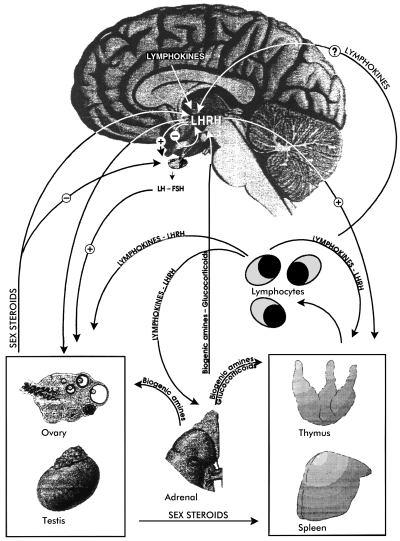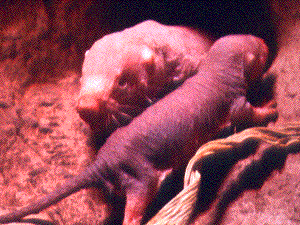 Mammalian Eusociality
Mammalian Eusociality
Biology 342 Fall 07
Mechanism: How are colonies maintained?
Phermones and Hormones * Queen Shoving * Inbreeding
The maintenance of a specific colony of animals is highly complex: much like in a communist government, each animal has a lot to gain by being lazy and getting a 'free ride' off the colony. Additionally, it would be in their best interest to try to breed their own litters. The queen exerts a lot of control over her subordinates, and keeps things running smoothly.
Phermones and Hormones (top)
It is clear that the queen induces infertility in her subordinates: female non-breeders have blocked ovulation, and male non-breeders have sperm that are reduced in number and mobility. Non-breeders of both sexes also have reduced levels of leuteinizing hormone, a hormone secreted by the pituitary gland that promotes sex steroid production (10). The brain morphology in general in the subordinates is similar to that of pre-pubescent mole-rats in other species--it has been hypothesized that this is also a mechanism of queen-subordinate control (16).
This hormonal reproductive suppression seems to be maintained by phermones or other secretions of the queen, possibly in her urine. When she is removed from a colony, other females will develop apparent sexual characteristics, and when one of them becomes pregnant, all the rest of the females will change in appearance back to that of the worker morph. (5)

Leuteinizing hormone's effects on the body. It's secreted in the pituitary gland and affects sex steroid production in the gonads. (Figure taken from 14)
Queen Shoving (top)
There are two morphs of subordinate naked mole-rats: the workers, and the dispersers (13). The dispersers eat more food and spend less time working: a system of inequality is in place where one caste does much more work than the other. This inequality seems like it would lead to disorder in the ranks, but the mole-rats have a solution for that.
This system seems to be held in place by the queen, through physical agression. The queen bullies the disperser mole-rats when they are being lazy by shoving them when they spend too much time grooming or sleeping. Her authoritarian behavior keeps conflict in check, and forces the workers to behave in a way that benefits her and not them (15).

Large (probably disperser-morph) and small (probably worker-morph) naked mole-rats in a tunnel (viii).
Inbreeding (top)
According to Haldane's theories (see Phylogeny page for more information) eusociality will only be a possibility in a community that is closely related. The most obvious way to ensure that a community will be genetically close is to have large amounts of inbreeding. It was at first presumed that inbreeding was the most common form of reproduction among the mole-rat communities (19). This conclusion seemed obvious since the mole-rats live in isolated communities and have only one reproducing female, but it has been shown that a high incidence of inbreeding is not the case (20). The naked mole-rat keeps up gene flow by the use of outbreeding, when a disperser male leaves the colony to start one of his own (for more information see the Ontogeny page). The evidence is not entirely clear whether outbreeding or inbreeding predominates. It has been speculated that the mole-rat is an obligate inbreeder (1), but others have suggested that outbreeding, when possible, is the preferred mechanism (4). Either way, the high capacity of a colony to inbreed keeps them alive and going when the opportunity to refresh the gene pool is not presented.